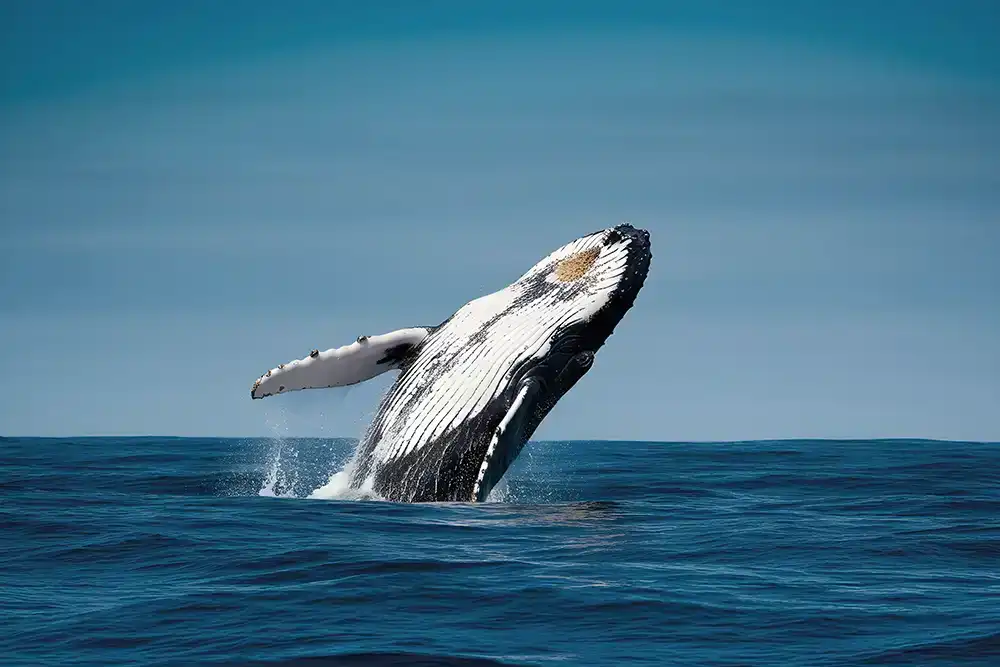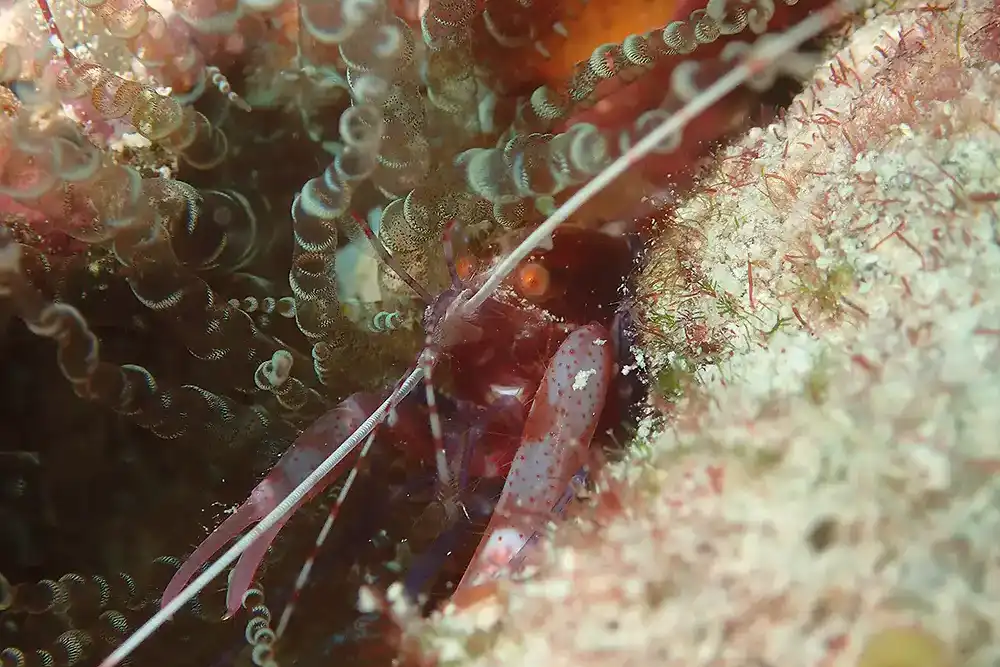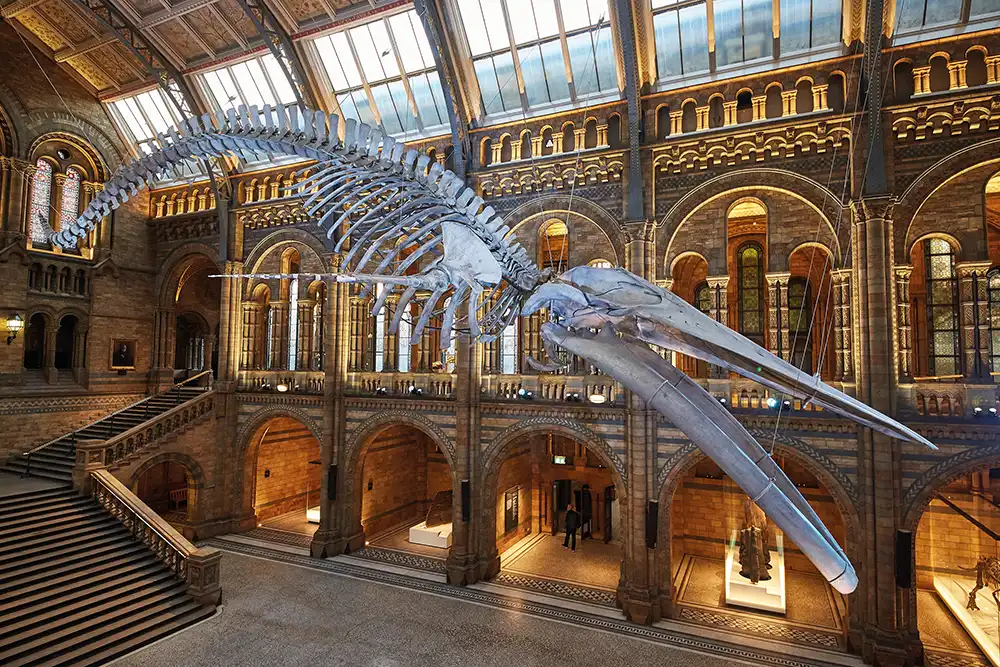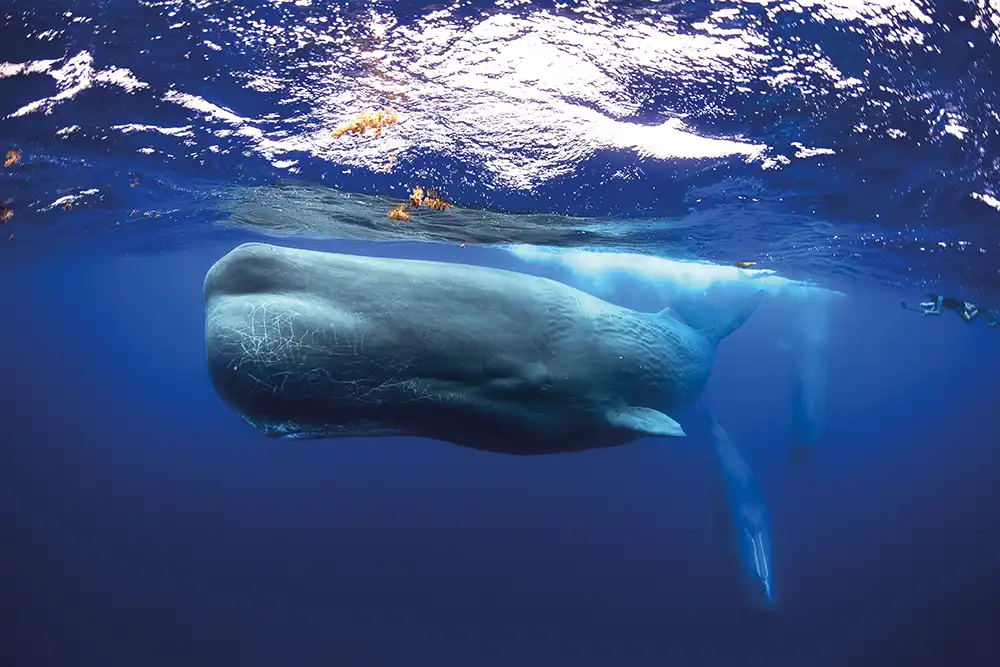
As a collection of rare recordings of whale song from the Natural History Museum’s archives is digitised for the first time, curator Richard Sabin tells Steve Pretty about the extraordinary world of underwater sound
By Steve Pretty
The 12th-century Persian poet Rumi wrote that ‘Silence is an ocean’. It’s easy to see why people think of the underwater world as a place of profound quiet. As divers, though, we know different.
So often, the minute my head disappears beneath the waves, the sonic environment feels just as rich as the visual. Shrimps snapping away, parrotfish scraping coral, bubbles rushing past my ears and, if I’m extremely lucky, the clicks of distant dolphins or even, memorably, the song of a humpback whale with whom I was about to have a close encounter.
Alongside my work as an underwater photographer, I am a professional musician and composer, and since 2023 also the host of my podcast Steve Pretty On The Origin of the Pieces. It’s fair to say that I am obsessed with sound, and with helping people to connect and engage with their sonic environment.

This usually takes place above the surface, but recently I had the opportunity to work with Richard Sabin, a renowned cetacean expert and principal curator of mammals at the Natural History Museum (NHM). In so doing, my passion for sonic exploration moved underwater.
Richard and I had been booked to run a session on underwater sound for the brilliant First Light Festival in Suffolk. At our first meeting to discuss the event, he revealed something from the NHM archives that took us in an unexpected direction: a tranche of extremely rare vinyl records from the earliest days of underwater recording.
Richard had no way of digitising them, so I suggested we head to Audio Gold, a hi-fi emporium in north London. There we could listen to these unique records on specialist equipment while I turned them into digital files that would be accessible to museum researchers in the future.

These old 78 RPM records comprised a selection of cetacean recordings made by US research and naval institutions from the 1940s to the 1960s, alongside some po-faced commentary that was as evocative as it was hilariously dry.
Seeing Richard and his colleague Dr Sophia Nicolov’s faces light up as they listen to these clicks and pops – to me, sometimes barely distinguishable from the crackle of the 78s they were recorded onto – and then discuss in detail how these calls have changed or adapted over time, I am reminded of just how recently it is that we have been able to tune our ears into these otherworldly sounds.
Underwater microphones, known as hydrophones, are a comparatively new technology. The discs that we are listening to were some of the first attempts by US scientific and military institutions to capture the sounds of species like belugas, dolphins and humpbacks using these early hydrophones.
‘There was an interest in how these animals were able to communicate with each other across such large distances, and potentially how those data could be used, or how that science could be developed to aid with military communication’, says Richard.

‘An awful lot of the equipment that they were using was quite rudimentary. You need to be able to listen to the very quiet sounds, and there’s a lot going on outside the range of human hearing.’
All sound is vibration, and the physics of these vibrations work very differently with water as a medium compared to the air that we are used to. In water, sound travels at approximately 1,500 metres per second, compared to just 343 m/s in air. Not only that, but it is transmitted far more efficiently due to the density of water compared to air.
Low frequency sounds made by cetaceans can travel approximately 6,000 km under certain conditions; manmade explosions have been recorded at a distance of over 19,000 km.
‘Sound is the sensory medium of the sea, much more so than light, because light is absorbed so quickly’, says Richard. ‘Whales and dolphins are animals that we take for granted in the ocean.
‘But 50 million years ago, their ancestors were living on land. But something changed and, progressively, they moved into and became completely dependent on the ocean. Sound has become their main medium for communication.’

The pitch, or how high or low a sound is, is described in hertz (Hz) or vibrations per second. Human hearing extends from approximately 20 Hz to 20 KHz, with the upper end dropping off as we age.
The so-called great whales – blue whales and humpbacks – use relatively low frequencies, between around 7 Hz and 20 KHz, while toothed cetaceans – dolphins, porpoises, sperm whales – have a much larger range: between 0.1 Hz and 30 KHz.
This vast auditory range – something that human musicians can only dream of – is an incredible adaptation, and one with a very distinct purpose. But how do they use this amazing sonic facility?
‘One of the remarkable things about the toothed whales and dolphins is that they go down 2 km in depth, and they’re using echolocation, which is a beam of sound focused through a fatty material in their forehead,’ explains Richard.
‘They move their head from side to side, almost like a torch of sound. And anything that’s in the environment close by them gets touched by these sound waves. These sound waves are then reflected back, and an image is created in the brain of the animal, so that they can see what kind of a prey it’s dealing with.
‘This is all done in complete darkness, under incredible atmospheric pressure. They have to also control the amount of oxygen that they have in their body and make sure that they have got enough to get back to the surface of the ocean again, so it’s a wonderful series of adaptations.’

As land animals briefly venturing into a sonic, rather than a visual landscape, the loss of light feels completely disorienting – existential, even – to us humans. We must rely on our equipment, or sometimes trace the paths of bubbles to even know which way is up.
Underwater communication between divers is rudimentary – there’s a limit to how much you can convey by banging on a tank.
If you’re talking about a pod of sperm whales, however, it’s a very different story. ‘If one of them is echolocating, when the sound waves bounce back, all of them receive the image,’ says Richard.
These animals ‘see’ through sound, enabling a sort of group vision, with a signal transmitted by one individual, and the resulting image received by many. It’s an adaptation that I could have put to good use that time in Oman when my buddy saw an enormous humpback swim past and I missed it because I was busily snapping away at a clownfish.
The clicks and pops that form the basis of echolocation are very different from the classic whale song sounds that came to prominence through the multi-platinum 1970 album Songs of the Humpback Whale. So how do these approaches to underwater sound differ between cetaceans?

‘Humpback whales are a species that use something called cultural transmissions,’ says Richard. ‘It’s very similar to the way that we teach our young humans: you have a pattern of behaviour that becomes very specific to a particular group and pass that knowledge onto the next generation. There’s a lot of information that’s being encoded about where’s good to eat, how to find each other.’
As a musician, I’ve long wondered whether ‘song’ is really the right term to apply to these vocalisations, or whether that’s anthropomorphising these magnificent animals. Is what we’re hearing ‘music’ as we understand it? Yes and no, says Richard.
‘Blue whales and fin whales are using low frequency sounds to communicate with each other – it’s about finding your mates. They’re relatively solitary animals, so come the time when they need to find each other, they start to make these songs.
‘If you take it as a kind of a performance,’ he goes on, ‘then there’s more weight to it. There’s one theory that the male humpbacks are actually singing to show off to females. You’re talking about a rock musician basically.’

Just like human musicians, it turns out that all this noise leads whales to produce copious quantities of earwax. As we chat, Richard excitedly pulls out a little custom-made case containing the cast of a 9-inch piece of fin whale earwax.
‘This is one of the best things in the world,’ he tells me excitedly. ‘The wax builds up in the same way as it does with us, but [whale ear canals] don’t have an external opening, so they form these wonderful plugs.’
Scientists have been collecting these plugs since the early 20th century, but back in the 1950s, Richard’s predecessor at the NHM made a half-section through one and realised that it was full of layers that are laid down year by year and can therefore be used to tell the age of the animal.
In 2015, Richard was at a conference in the US listening to marine biologists talk about blue whales that had died after becoming trapped in sea ice. There had been a controlled examination of their bodies, and scientists started to examine what was inside the whales’ earwax plugs in detail for the first time.
The biologists shared their astonishing finding that these plugs are full of information about everything that an animal has experienced in its life, whether it’s exposure to contaminants in the ocean, pregnancy or stress levels.
Richard, alongside his counterpart from the Smithsonian Institution in Washington, stood up and announced to the conference that, together, their collections hold dozens of these plugs from animals that have been collected over the course of the past 150 years.

From that serendipitous moment came an extraordinary vein of new research: a timeline of cetacean experience from 1870 to 2016. ‘It gave us the opportunity to look at changes in the levels of stress in these whales,’ says Richard. ‘We saw correlations with human activity in the ocean – primarily things like commercial whaling, the First World War, Second World War – periods of stress in those animals relating directly to those time periods.’
Tracing these stress levels through these turbulent times, Richard and his colleagues found something equal parts fascinating and depressing. Rather than stress levels falling following the moratorium on commercial whaling, ‘from the 1990s, what we started to see was a general increase in stress levels of cetaceans’.
Richard believes that the most likely factor contributing to this rise is the impact of sound in the underwater environment. ‘One of the things that’s become much more pervasive, and much more of a problem in recent times is noise pollution from shipping. We’re changing the oceanscape faster than most marine species can adapt to.’
For animals living in an aural rather than visual environment, using sound to locate food and mates and to pass on critical information to their young, noise pollution is arguably one of the most significant challenges they face.
Yet it’s ‘something that none of us really talk about,’ Richard says. ‘I saw a photograph of some pebbles that had been painted by children from local schools. On every pebble, a child had drawn something that they were concerned about
in the ocean. It was plastic or oil but nothing about sound.’

The rare early recordings of underwater cetacean sounds that I digitised for the NHM may serve in time to document the changing nature of how these animals communicate. Just as the human voices that narrate them now seem quaintly evocative of mid-20th-century scientists, perhaps these clicks, pops, whoops and bellows are already out of time with how these animals communicate now.
It’s ironic that just as we’re getting to grips with cetaceans’ complex relationship with underwater sound, human activity such as global shipping and military hardware are changing their environment in fundamental ways.
There’s no easy answer. Reducing our sonic footprint isn’t straightforward, whether directly as divers or as citizens and consumers. But, just as the focus on plastic and chemical pollution in recent years has had a direct impact on governments around the world finally bringing in measures to help reduce these pollutants, increasing awareness of this aural threat has the potential to lead to change.
From considering the impact of noisy dive boats, to lobbying our governments to create a global shipping industry which takes responsibility for its sonic as well as carbon footprint, as a community of underwater obsessives, it’s down to us to break our own silence and speak up to help preserve this sonic wonderland.
You can listen to the Natural History Museum’s cetacean sound recordings on Steve’s podcast, Steve Pretty on the Origin of the Pieces: originofhepieces.com
More great reads from our magazine
- ‘Rays of Hope’ – an Interview with Karen Fuentes, founder of the Manta Caribbean Project
- ‘Taking Stock’ – expert tips on becoming a stock photographer
- ‘Voyage of Discovery’ – finding new dive sites in Raja Ampat
- ‘Machine learning’ – an interview with Blue Machine author Helen Czerski
- ‘Pierless’ – the myriad photographic opportunities of Barbados’ Cement Pier



